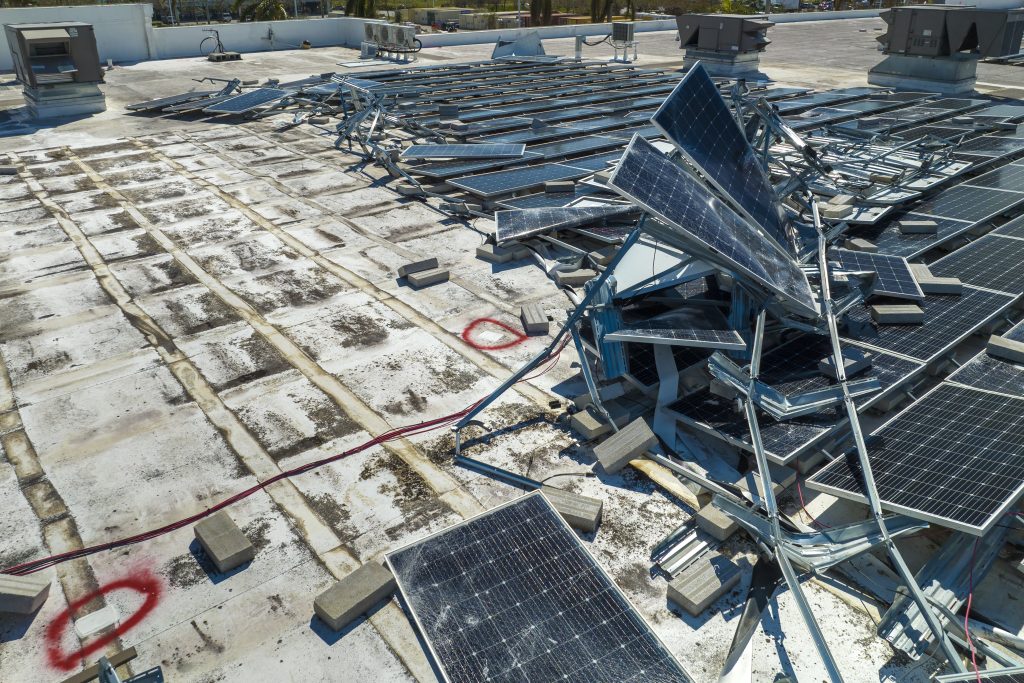Solar panel waste is projected to reach one million tonnes by 2035. Effective management of this problem is fast becoming a priority for Australian manufacturers.
Managing the waste from rooftop solar and solar farms reaching the end of their lifespan might seem like an insurmountable undertaking – but there’s increasing incentives to tackle the issue.
The total value from materials that could be extracted from solar panels at the end of their life, for instance, is projected to exceed AU$1 billion by 2035. Plus, there’s the obvious boon to the environment from reusing or recycling parts rather than disposing of them in landfill.
This makes end-of-life management of solar panels of vital importance for innovation, economic and sustainability reasons.
Rising problem
The scope of the issue is increasing over time, according to a report authored by UNSW engineers and published by the Australian Centre for Advanced Photovoltaics (ACAP).
“On an annual scale, waste volume is expected to surpass 50,000 t in 2025 and could reach approximately 100,000 t, equivalent to 1.2 GW per year, from 2030 to 2035 nationwide,” reads the report.
“Significantly, more than 80 per cent of the decommissioned solar panels by 2030 are projected to emanate from small-scale distributed PV systems, attributable to the earlier evolution of Australia’s residential PV market.”
The below graph, drawing on ACAP report data, illustrates the projected cumulative waste from solar photovoltaics (PV) in Australia, comparing waste from small- and large-scale systems.
Large-scale systems – those producing more than 100 kW of power – are projected to take up an increasingly large proportion of waste from PV.
Now, let’s break down the state of play more locally; the annual PV waste in each state and territory in Australia until 2035 is shown in the graph below.
Rising levels of waste in states such as New South Wales, Victoria and Queensland will contribute to an aggregate waste of almost 100,000 t per year by 2033.
A question of cost
Change is needed, therefore, to reverse this trend. The ACAP report lists some of its recommendations as:
- Facility development: Establish large scale PV waste management facilities (more than 5000 t per year) in five big cities within three years and expand to regional areas within six years.
- Regulatory measures: Enact a nationwide product stewardship program to fund and oversee the management of PV end-of-life to support early-stage industry development.
- Collection accessibility: Create easily accessible drop-off points, and increase public awareness about PV waste management.
- Technological advancement: Promote innovation in scalable, efficient, and comprehensive recycling technologies and develop robust reuse standards and procedures to enable a PV circular economy.
A module suited to one part of the world may not suit the Australian context, Robert Sporne, Head of Innovation and Development at solar panel manufacturer and retailer Tindo Solar, told create.
“At Tindo Solar, we concentrate on rooftop models designed for Australia, where we have quite an intense mix of situations,” he said. “We focus on manufacturing panels that can handle high-UV temperatures and high-humidity conditions.”
Sporne said that Tindo Solar is currently committed to manufacturing solar panels with a longer lifespan, rather than focusing on recycling efforts – and the rationale is an economic one.
“Our philosophy is to make a bulletproof product that lasts forever – or almost forever – rather than produce a product prone to premature failures,” he said.
He explained that owing to the country’s size, Australia requires localised recycling in each state; the value extracted from a recycled module, he said, would be lost in freight if the materials were then transported across long distances.
The problem is that the solar industry is still in a “downward spiral” in terms of pricing.
“The more pressure there is on reducing the price of a module, the less cost-effective it is to recycle those materials,” Sporne said. “Why would the industry try to extract the materials out of an old module when it’s still cheaper to take those materials out of the ground?
“Until we reach a certain scale, and the value of those materials that have already been put in panels becomes greater than the value of pulling those materials out of the ground, the industry will be in a limbo state.”
